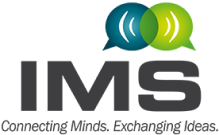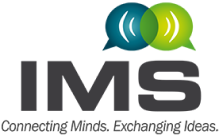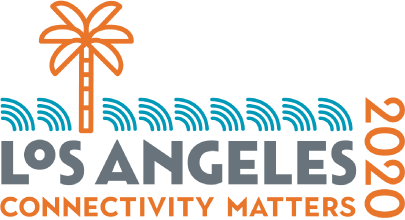Industry Workshops
Traditional arrays consisting of well-isolated elements are usually studied via analytical beamforming techniques. However, with the introduction of 5G networks, phased arrays need to be designed according to strict size and cost requirements, which may result in sub-optimal isolation. Beamforming optimization for such arrays needs to consider the individual element patterns, system S-parameters, varying impedance matching, active reflection coefficients and amplifier characteristics simultaneously, all of which are beyond the scope of classical formulations. In this workshop we’ll study the limits of the classical formulations and go beyond them with numerical techniques, enabling accurate, fast and robust optimization of compact arrays.
This session will describe how the DDC and mm-wave bandwidth options provide a multi-channel, coherent receiver with alternatives for bandlimited, tunable applications where the full instantaneous bandwidth of the scope is not needed. Key RF performance specs will be presented, as well as techniques for linking scopes for 8, 12, or more channels of coherent acquisition. The 89601B VSA software provides a convenient and powerful radar and pulse analysis application that is tightly integrated with the scope. Several live demos will highlight the powerful features discussed. We will close with an overview of other multichannel platforms available from Keysight.
Early deployments of 5G are rapidly under way. 5G features include enhanced mobile broadband, massive machine type communication, ultra-reliable and low latency connection, Vehicle-2X, and more. What does this mean to filter, amplifier, and antenna designers? This presentation distills the essentials of 3GPP NR standard specifications and demonstrates how Visual System Simulator (VSS) software within the NI AWR Design Environment platform can be configured for various scenarios envisioned for 5G.
Energy Efficiency, Linearity, Output Power and Bandwidth are the four key technical parameters of a Tx RFFE. Efficiency is the differentiator.
Increasing miniaturization and integration of multiple functions and channels into one device pose a new challenge for RFFE’s. Matching to real world environments is important, as the RFFE feeds the antennas for beamforming directly.
We will discuss various efficiency enhancements on the PA design while optimizing test time and improve sensitivity at the same time. Industry partners will round up the session offering an additional perspective.
Today’s emerging millimeter-wave applications in the 57-71 GHz, 71-76 GHz, and 81-86 GHz frequency bands demand improved system performance to achieve higher data throughput using larger contiguous swaths of spectrum and higher-order modulation. Moving beyond 110 GHz and into 6G sub-terahertz research in D-band (110-170 GHz) and G-band (140-220 GHz) presents even greater opportunities and challenges. This workshop will discuss some of the key considerations in tackling the test and measurement challenges for today’s and tomorrow’s emerging millimeter-wave applications.
Achieving electromagnetic compatibility (EMC) for an intentionally radiating device is a complex task, beginning before any actual design activity. Understanding the regulatory EMC requirements and the impact of design choices on EMC performance is critical for meeting this guaranteed specification in a predictable manner. This workshop will begin by discussing the EMC requirements for 5G New Radio base stations, mobile terminals and ancillary equipment as defined in the 3GPP (and ETSI) technical specifications and illustrating the process of deriving the actual requirements. The workshop will continue with a discussion of key EMC concepts and recommended techniques for a successful design.
This workshop will cover the advancements in silicon technologies for mm-wave communication systems including 5G and Satcom. We will talk about IC technologies for silicon beamformers including circuit architectures, advanced packaging methods and silicon processes. We will also invite our partners to demonstrate their phased array systems using these silicon beamformers. The overall content will cover ICs and systems at Ku and Ka band.
With increasing bands, carrier aggregation, and MIMO, 5G front-end requires more filters. Various filter technologies such as SAW, BAW, and IPD compete for this market. These different filter technologies will be reviewed. IPD finds its unique area of applications with its advantage on size, performance, and cost. For 5G NR, IPD is especially suitable due to the high frequency and large bandwidth requirement. Different variants of IPD technologies such as silicon and TGV will be compared for 5G NR filters. To meet the additional requirement on sharp out-of-band rejection, IPD is integrated with BAW to achieve both bandwidth and rejection.
This workshop explains phase noise fundamentals, measurement, and its impact on performance of RF/microwave systems. We will compare different measurement instruments and techniques. We’ll describe the role of the phase detector and the use of cross correlation in optimizing sensitivity, and we’ll discuss the impact of reference sources on phase noise measurements. Residual and absolute phase noise examples and practical DUT measurements will be shown. Lastly, we’ll examine AM Noise measurement techniques.
Continuous expansion on boundaries of on-wafer measurements is driving the need for simultaneous development of unique VNA systems, innovative probe designs, and advanced calibration techniques. This workshop by Anritsu and MPI will describe key equipment parameters that both enable system performance while maintaining overall measurement integrity. Important aspects of VNA systems such as power control, raw and corrected port parameters that can affect calibration and measurement stability will be presented. Advancements in probe design and calibration techniques will be highlighted. The workshop will include wafer substrate considerations to obtain calibration and measurement optimization and ultimately DUT design success.
The 5G standard is both large and complex. In this workshop, we seek to demystify 5G signal construction, demodulation, analysis, measurements and conformance tests with a series of lab demonstrations, leveraging the 89600 VSA software with the UXA signal analyzer along with the Signal Studio software with the VXG signal generator. Besides serving as a world-class measurement tool, the VSA can also be used as a wonderful learning vehicle, enabling a student of a new standard to explore characteristics of his/her signal under test. We look forward to sharing the story of 5G signal construction, measurements and analysis.
Advances in quantum control used to encode information quantum processors, is critical for scaling quantum computing beyond current NISQ-era architectures. For the prevailing quantum computing paradigms, future generations of quantum control circuitry will need to operate at cryogenic temperatures. This workshop will focus on the measurement and calibration challenges encountered when performing microwave characterization of these components at cryogenic temperatures. Keysight experts will discuss typical measurements in this application space and some methods for eliminating the errors. Lake Shore Cryotronics, will share insights for wafer-level, microwave device characterization including device temperature, probing challenges, and quality of calibration at cryogenic temperatures.
This workshop presents the development of a Doherty PA offering higher PAE at output power backoff. Communication amplifiers must operate at larger OBO levels to keep devices in their linear region to reduce the impact of signals with PAPR power ratios. A design process will be demonstrated that covers characterization of the devices used in the main and peaking amplifiers (modeling Class-AB and Class-C GaN HEMTs), identification of optimum load impedances through load-pull analysis, network synthesis impedance matching, impedance inverter design, and design verification through EM analysis. Linearity performance will be simulated using a 5G test bench system-level analysis.
The OTA Test is a standard process to evaluate the radio performance of 5G devices. It requires dedicated test chambers and sophisticated testing instruments to perform the full testing procedures.The test and measurement solutions are critical for the mass production stage because of the high setup expanse and testing cost. TMYTEK creates an innovation OTA testing and measurement solution-XBeam. Through XBeam test solution, the overall testing time in the mass production stage could be reduced by 15 to 20 times compared with the traditional rotating test chamber approach.
5G New Radio (NR) differs significantly from previous generations of wireless standards while opening the door to new business models. It introduces a new end-to-end network architecture that promises high data throughput and ultra-reliable low latency connections. Learn about the technology and challenges associated with the implementation of the 5G NR Release 15 standard and uncover new details about its numerology, frame structure, and waveforms. We’ll discuss initial access and beamforming and find out how they work in different network architectures. We’ll review key aspects of 5G NR Release 16, so you can prepare for the new applications it enables.
In this workshop, an overview of Cree/Wolfspeed foundry Process Design Kit and nonlinear device model will be presented. A detailed discussion of usage guidelines and design boundaries will be covered along with key aspects of designing MMICs using the kit. In this two-hour session, you will learn how to best utilize the functions and features in the MWO PDK, including proper ways of handling various situations for thermal, stability, and design rules. Furthermore, the audience will gain insight into the use of these features for key performance analysis.
Since the inception of electromagnetic (EM) analysis, there has been incremental improvement in the basic techniques used in the analysis of physical designs. In this workshop, Cadence will introduce you to the next level of electromagnetic and thermal analysis using advanced computer parallelization techniques to dramatically improve analysis speed and memory footprint across diverse compute farms. This workshop covers creating and importing design, setting up an analysis, reviewing and using simulation results in higher-level simulations. Cadence will also introduce the attendee to our Intelligent System Design (ISD) flow and how the Clarity Electromagnetic and Celsius Thermal Analysis simulators are used in system-level and module-level RF/microwave design flows and bring the phrase solving the impossible to reality.
This workshop will highlight the best methods for setting up, calibrating, and evaluating measurement performance in coaxial probes up to 145 GHz and in waveguide bands spanning WR15 (75 GHz) to WR1 (1100 GHz) over a broad (-40 to 125c) temperature range.
We will present a novel means by which directly-connected waveguide probe can still be used for reliable over-temperature testing on a semi-automated wafer prober and maintain ease of operation.
Practical programming examples using WinCalXE software will be demonstrated automating data measurement and analysis for on wafer parametric measurements, and to evaluate system stability and performance.
With the continuous development of wireless technologies and their tight integration with various electronic/computer/communication devices, performance verification testing in a real world environment, at both the system and the intra-system levels, presents difficult challenges. Test methodologies need to adapt to support 5G New Radio SISO, NSA, TRP, RSE, and TIS measurements. Increasing frequency ranges such as 600 MHz to 6 GHz present their own test challenges. This workshop will present possible solutions to address the challenges generated by the 5G New Radio and mmWave applications through system planning and innovative wireless performance verification testing methodologies.
Designers of today’s complex, multi-featured communications products require accurate and fast EM simulation to deliver cost-effective, high performance products to market.The AXIEM EM simulator delivers the accuracy, capacity, and speed designers need to characterize and optimize passive components on RF PCBs, modules, LTCCs, MMICs, RFICs, and antennas. This presentation discusses 10 best practices for using the AXIEM simulator that will help designers effectively and efficiently use the software to overcome the most commonly encountered issues when running EM simulations. The best practices address four main design areas: ports, EM environment, meshing, and simulation.
Scientists have been investigating the sources of uncertainty in microwave and RF measurements and have proposed models and techniques to quantify the individual contributions. These contributions can be systematically determined and added as part of an overall measurement, both for small-signal S-parameters measurements as well as large-signal power measurements. This empowers a designer to report a product’s performance with uncertainties, and give both designers and end-users the confidence needed to ensure product performance over time.
We will introduce the theory and implementation of measuring with uncertainty & show the effects of common components on S-parameters and power measurement uncertainty.
In this workshop, we will walk power amplifier designers through the process of using MWO Large Signal Models for discrete transistors from Cree/Wolfspeed. Designs presented include a 200W single-ended GaN avionics power amplifier and a 25W C-Band GaN Satcom power amplifier. The designer will show how to accurately simulate the designs using self-heating features, via-farms, and full EM simulation. The native features and functions of the Cree/Wolfspeed MWO will also be covered in detail.


